Producer Profile: Burgundy's Maison Louis Jadot Debuts Oregon Résonance Pinot Noirs
"Some wines are like mystery books that you read fast, enjoy and forget. Burgundy is like a classic that you take in slowly, assimilate and always remember." - Jacques Lardière
Since Burgundy-based négociant Maison Louis Jadot's 2013 purchase of the 32-acre Resonance vineyard in the Yamhill-Carlton District of Oregon's Willamette Valley, Pinot Noir fans have been in a state of anticipation. After all, this was Jadot's first vineyard purchase outside of France since its inception in 1859, not to mention the appointed winemaker for the new project is Jadot's revered winemaker of 42 years, Jacques Lardière, who came out of a brief 2012 "retirement" to oversee the new project in 2013. After searching for just the right plot of land, can the Jadot team coax classic wines from the unfamiliar Oregonian terroir?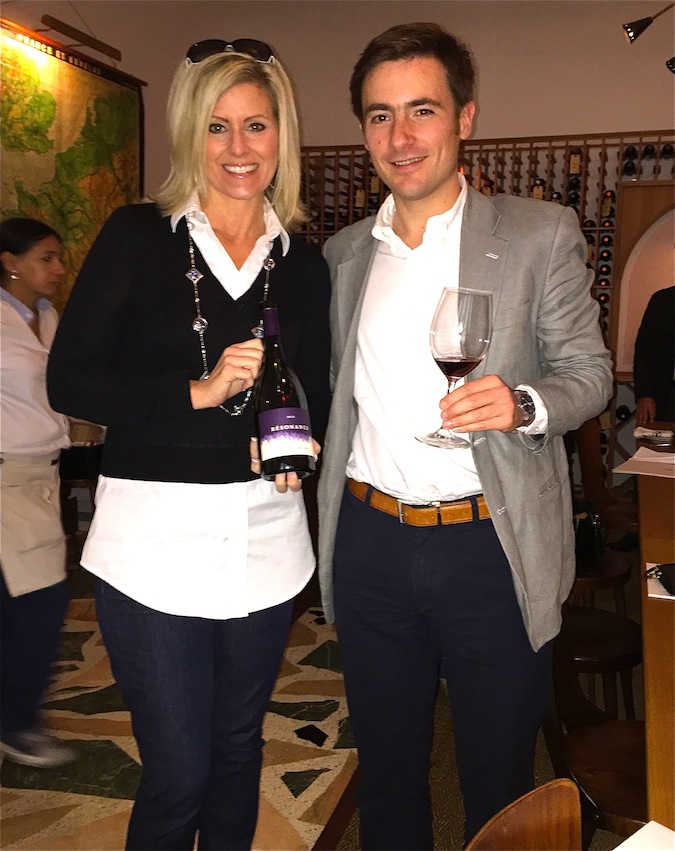
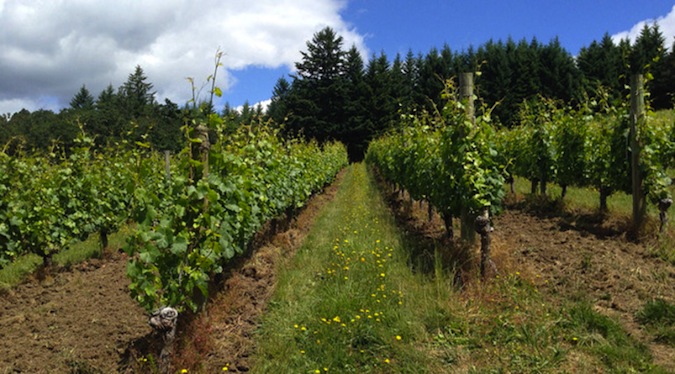 I recently attended a tasting hosted by Head of Operations for Résonance, Thibault Gagey. The last name might sound familiar to Burgundy fans since Gagey is following in the footsteps of his father and current Jadot President, Pierre-Henry Gagey, and grandfather André Gagey who also played a significant role in the company, including hiring Lardiere in 1970. After obtaining a Master's Degree in Management from the Ecole Supérieure de Commerce de Reims, Gagey gained work experience during stints as a fine wine sales manager in Asia, cellar hand in New Zealand and brand manager in the US before returning to Burgundy in 2014 to work at Jadot. Shortly thereafter, he became involved in the new project.The tasting was held at Marion, a charming, Mediterranean-inspired café, bakery, market and oyster bar in Miami's tony Brickell district. Conceptualized by Mister Hospitality duo, Mathieu Massa and Michael Ridard following the success of Bâoli Miami, the restaurant's chic airy atmosphere, delights Marion patrons as they shop or dine on fresh, locally sourced produce and artisanal cuisine. Executive Chef Jean Paul Lourdes created some delicious dishes to enjoy with the tasting's featured wines.
I recently attended a tasting hosted by Head of Operations for Résonance, Thibault Gagey. The last name might sound familiar to Burgundy fans since Gagey is following in the footsteps of his father and current Jadot President, Pierre-Henry Gagey, and grandfather André Gagey who also played a significant role in the company, including hiring Lardiere in 1970. After obtaining a Master's Degree in Management from the Ecole Supérieure de Commerce de Reims, Gagey gained work experience during stints as a fine wine sales manager in Asia, cellar hand in New Zealand and brand manager in the US before returning to Burgundy in 2014 to work at Jadot. Shortly thereafter, he became involved in the new project.The tasting was held at Marion, a charming, Mediterranean-inspired café, bakery, market and oyster bar in Miami's tony Brickell district. Conceptualized by Mister Hospitality duo, Mathieu Massa and Michael Ridard following the success of Bâoli Miami, the restaurant's chic airy atmosphere, delights Marion patrons as they shop or dine on fresh, locally sourced produce and artisanal cuisine. Executive Chef Jean Paul Lourdes created some delicious dishes to enjoy with the tasting's featured wines.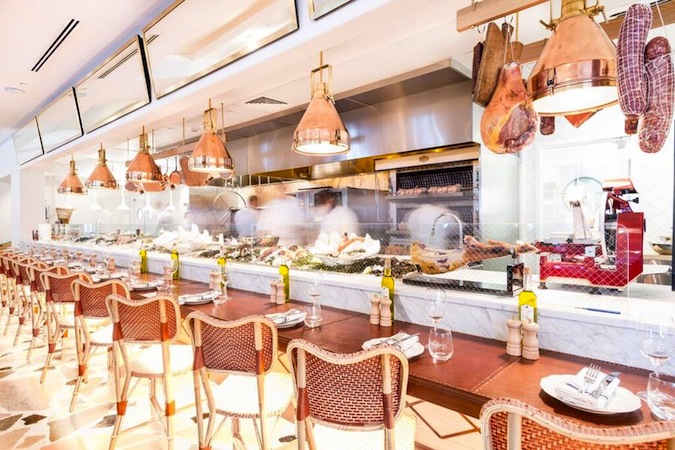
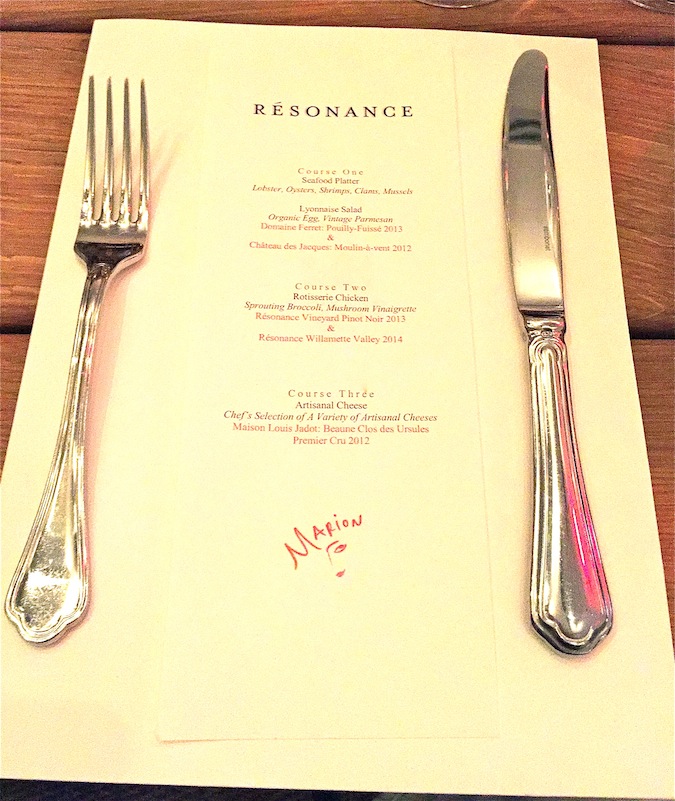
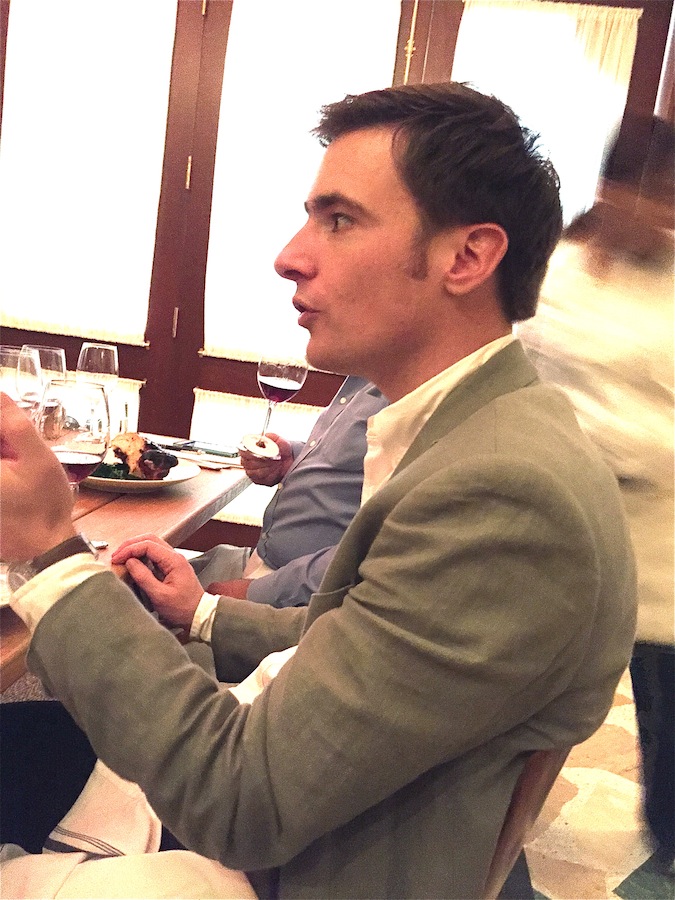 As the tasting got underway, the obvious question for Gagey was, "why Oregon?" and "why now?" Let's face it, since Burgundy's Drouhin family braved the west coast in the 1980's few other domaines have followed suit. "It was my father's idea to expand outside of Burgundy, and Jacques was going to be involved from the beginning...he's very excited about the project," Gagey explained. On finding just the right vineyard, "We'd seen other places before but we really had a crush on the place! The quality of the wine, quality of the property and the feel of the place were just right. The first time my father saw it he knew this is where we should be and he and Jacques both had the same initial feeling." What sealed the deal, however, was a tasting of previous vintages, "We felt Resonance had a sense of place...even if the winemaker or vintage was different."The 32-acre Résonance vineyard kept its name in the purchase which Gagey explained, "We did not choose the name but it's a great name because it means the same thing in English as in French. This is why we decided to keep [it] and use it as a brand." The vineyard itself is situated on a portion of a low ridge approximately 250-500 feet above sea level, emerging out of the Coast Range in Oregon's Yamhill-Carlton District AVA. Twenty acres of the vineyard are planted to Pinot Noir which thrives in its Willakenzie (old sedimentary deposits) and Yamhill (ancient submarine basaltic) soils. This dry-farmed vineyard is one of the oldest in the Willamette Valley and, interestingly, features only non-grafted rootstocks which were planted in 1981.
As the tasting got underway, the obvious question for Gagey was, "why Oregon?" and "why now?" Let's face it, since Burgundy's Drouhin family braved the west coast in the 1980's few other domaines have followed suit. "It was my father's idea to expand outside of Burgundy, and Jacques was going to be involved from the beginning...he's very excited about the project," Gagey explained. On finding just the right vineyard, "We'd seen other places before but we really had a crush on the place! The quality of the wine, quality of the property and the feel of the place were just right. The first time my father saw it he knew this is where we should be and he and Jacques both had the same initial feeling." What sealed the deal, however, was a tasting of previous vintages, "We felt Resonance had a sense of place...even if the winemaker or vintage was different."The 32-acre Résonance vineyard kept its name in the purchase which Gagey explained, "We did not choose the name but it's a great name because it means the same thing in English as in French. This is why we decided to keep [it] and use it as a brand." The vineyard itself is situated on a portion of a low ridge approximately 250-500 feet above sea level, emerging out of the Coast Range in Oregon's Yamhill-Carlton District AVA. Twenty acres of the vineyard are planted to Pinot Noir which thrives in its Willakenzie (old sedimentary deposits) and Yamhill (ancient submarine basaltic) soils. This dry-farmed vineyard is one of the oldest in the Willamette Valley and, interestingly, features only non-grafted rootstocks which were planted in 1981.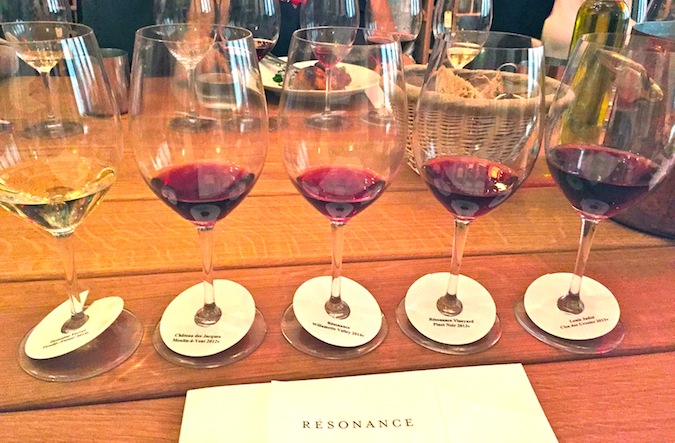 Gagey shared a selection of wines with us beginning with the 2013 Domaine Ferret Pouilly-Fuissé ($34). Following World War II, this Burgundian domaine, owned by Jadot since 2008, was the first in Pouilly-Fuissé to move from mass produced wine to estate bottling to ensure higher quality standards. The regions clay and limestone soils are perfect for Chardonnay and winemaker Audrey Braccini deftly crafts this wine from a blend of the best vineyard plots with 10-35 year old vines. Braccini is the latest in a continuous line of esteemed women who've run Domaine Ferret since 1840, a notable accomplishment in the historically male dominated field. Following harvest, each parcel is vinified separately and then aged in a combination of enamel tanks and used oak barrels. The end result is a wine with reserved notes of citrus, golden apple, hazelnut, minerals and spice with a lovely food-friendly acidity.Next, we sampled the 2012 Chateau des Jacques Moulin-à-Vent Beaujolais. This southernmost outpost of Burgundy features wines crafted from the Gamay grape which, in the right hands, can approximate the Pinot Noirs of the Cote D'Or. Of the ten Beaujolais crus, Moulin-à-Vent is widely considered to be the most "Burgundian," exhibiting complexity, structure and ample aging potential (10-20 years). Chateau des Jacques winemaker Guillaume de Castelnau partially destemmed the grapes after harvest and vinified the wine in closed vats. Eighty percent of the wine was then matured in French oak barrels for 10 months, a practice that's quite unusual for Beaujolais yet representative of how de Castelnau and Lardière's implementation of Burgundian methods of winemaking have improved the quality of these often maligned wines. This robust Beaujolais displayed notes of dark cherry, violet, leather and tobacco with a delightfully spice-tinged finish.
Gagey shared a selection of wines with us beginning with the 2013 Domaine Ferret Pouilly-Fuissé ($34). Following World War II, this Burgundian domaine, owned by Jadot since 2008, was the first in Pouilly-Fuissé to move from mass produced wine to estate bottling to ensure higher quality standards. The regions clay and limestone soils are perfect for Chardonnay and winemaker Audrey Braccini deftly crafts this wine from a blend of the best vineyard plots with 10-35 year old vines. Braccini is the latest in a continuous line of esteemed women who've run Domaine Ferret since 1840, a notable accomplishment in the historically male dominated field. Following harvest, each parcel is vinified separately and then aged in a combination of enamel tanks and used oak barrels. The end result is a wine with reserved notes of citrus, golden apple, hazelnut, minerals and spice with a lovely food-friendly acidity.Next, we sampled the 2012 Chateau des Jacques Moulin-à-Vent Beaujolais. This southernmost outpost of Burgundy features wines crafted from the Gamay grape which, in the right hands, can approximate the Pinot Noirs of the Cote D'Or. Of the ten Beaujolais crus, Moulin-à-Vent is widely considered to be the most "Burgundian," exhibiting complexity, structure and ample aging potential (10-20 years). Chateau des Jacques winemaker Guillaume de Castelnau partially destemmed the grapes after harvest and vinified the wine in closed vats. Eighty percent of the wine was then matured in French oak barrels for 10 months, a practice that's quite unusual for Beaujolais yet representative of how de Castelnau and Lardière's implementation of Burgundian methods of winemaking have improved the quality of these often maligned wines. This robust Beaujolais displayed notes of dark cherry, violet, leather and tobacco with a delightfully spice-tinged finish.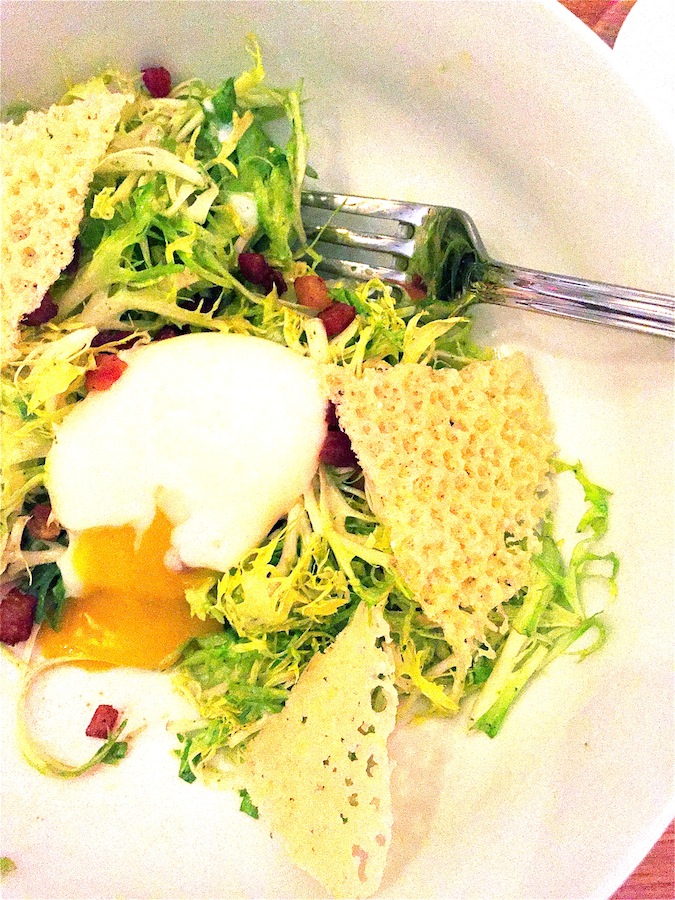 Sufficiently primed by the two Burgundies, next were the two Résonance wines, beginning with the most recent release, the 2014 Résonance Willamette Valley Pinot Noir ($48). The grapes for this wine were sourced from estate vineyards (Résonance and Découverte) and top vineyards in the Dundee Hills AVA. Following fermentation, the wine was aged for 13 months in French oak, 20% new. Gagey was quick to note the wine had only been bottled a few weeks ago, "It's very tight and needs to breathe, it won't even be in the market until September." The result was a wine with great promise, featuring a lovely ruby hue and alluring aromas of red and black fruit and spice. On the palate, a core of red cherry fruit was complemented by pomegranate, earth and a hint of cassis framed by soft tannins and a bright acidity that immediately made me think of food - specifically, a savory herb-roasted chicken with crispy skin or a mouth-watering Coq au Vin.Next was the 2013 Resonance Vineyard Pinot Noir ($65), the first Jadot-owned vintage made from grapes harvested exclusively from the eponymous vineyard. Gagey prefaced the wine by saying, "2014 was a great vintage...but 2013 was a little more complicated." Storms threatened mid-harvest, yet the Résonance team emerged victorious, "It might be the luck of the first vintage, but we picked everything before the rain came!" This wine was aged for 15 months in French oak, 50% new, and as I lifted the glass to my lips I inhaled the enticing aromas of ripe, red fruit and spice. On the palate, the wine had a beautiful depth of flavor with layers of cherry fruit, minerals, spice and earth which continued to reveal themselves throughout the finish. In its youth, this wine was elegant and balanced with structure that alluded to optimal ageability, much like its Burgundy counterparts. When asked about the aging potential of the Oregon wines Gagey replied, "I think it has good aging potential but I don't know, we shall see and we are still learning."
Sufficiently primed by the two Burgundies, next were the two Résonance wines, beginning with the most recent release, the 2014 Résonance Willamette Valley Pinot Noir ($48). The grapes for this wine were sourced from estate vineyards (Résonance and Découverte) and top vineyards in the Dundee Hills AVA. Following fermentation, the wine was aged for 13 months in French oak, 20% new. Gagey was quick to note the wine had only been bottled a few weeks ago, "It's very tight and needs to breathe, it won't even be in the market until September." The result was a wine with great promise, featuring a lovely ruby hue and alluring aromas of red and black fruit and spice. On the palate, a core of red cherry fruit was complemented by pomegranate, earth and a hint of cassis framed by soft tannins and a bright acidity that immediately made me think of food - specifically, a savory herb-roasted chicken with crispy skin or a mouth-watering Coq au Vin.Next was the 2013 Resonance Vineyard Pinot Noir ($65), the first Jadot-owned vintage made from grapes harvested exclusively from the eponymous vineyard. Gagey prefaced the wine by saying, "2014 was a great vintage...but 2013 was a little more complicated." Storms threatened mid-harvest, yet the Résonance team emerged victorious, "It might be the luck of the first vintage, but we picked everything before the rain came!" This wine was aged for 15 months in French oak, 50% new, and as I lifted the glass to my lips I inhaled the enticing aromas of ripe, red fruit and spice. On the palate, the wine had a beautiful depth of flavor with layers of cherry fruit, minerals, spice and earth which continued to reveal themselves throughout the finish. In its youth, this wine was elegant and balanced with structure that alluded to optimal ageability, much like its Burgundy counterparts. When asked about the aging potential of the Oregon wines Gagey replied, "I think it has good aging potential but I don't know, we shall see and we are still learning."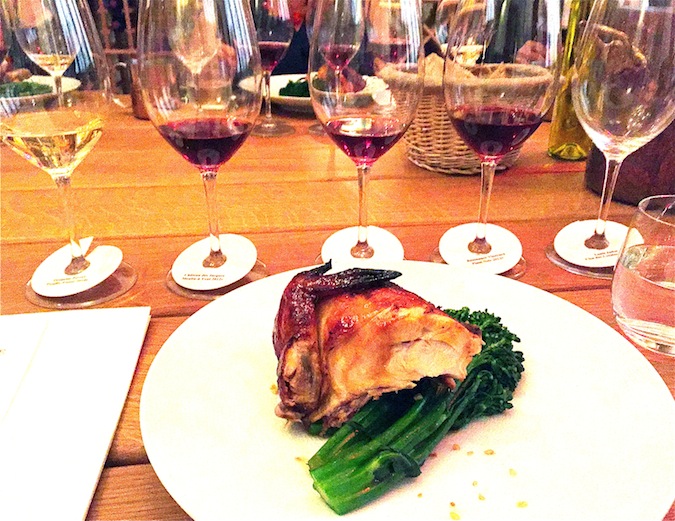
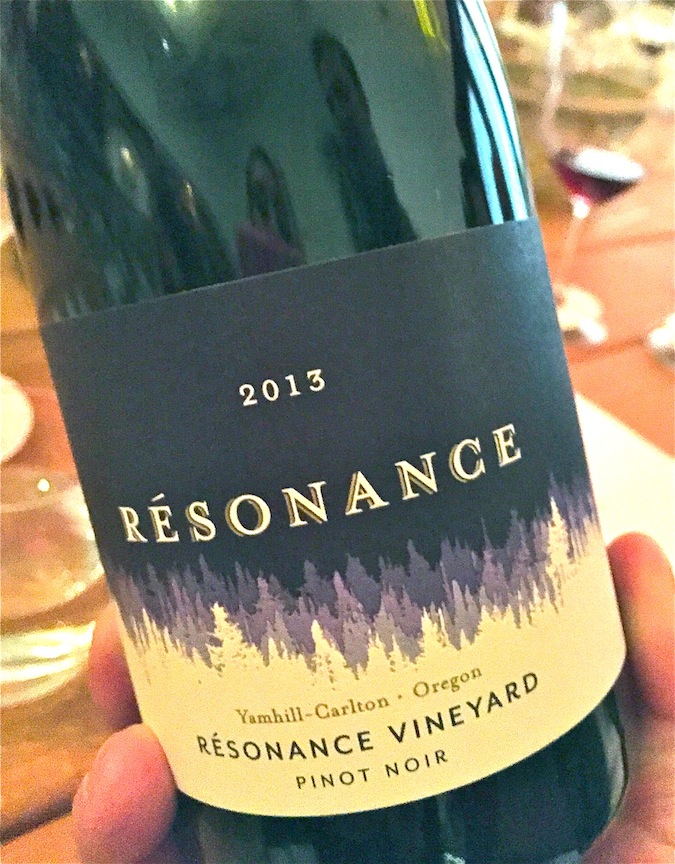 When asked whether Résonance will focus on single vineyard wines or blends in the future, Gagey spoke from the heart, "Being from Burgundy, single vineyard is very, very important and something that we really believe in...and this is what have been doing in Burgundy for ages and what we want to do in Oregon but we'll do a blend as well." On plans to plant any other grapes, "We're planting a little Chardonnay now, but we will see...we are from Burgundy so for now we're going to stick with what we know." When asked if there was a relationship between them and the Drouhins, the first Burgundy family to establish an Oregon outpost, Gagey replied, "I worked the 2012 vintage in Oregon with Veronique [Drouhin] and we are very good friends. They have been in Oregon since 1987 and have done a great job."We finished the tasting with a vinous gem, the 2013 Maison Louis Jadot Beaune Clos de Ursules ($75). This wine was produced from the Clos des Ursules, a walled portion (or clos) of the Premier Cru Vignes Franches vineyard that has been owned by the Jadot family since 1826, before the company was officially founded. Jadot is the only producer of wine from this Premier Cru which is comprised of a scant 2.15 hectares. Winemaker Frédéric Barnier crafted a lovely wine in the complicated 2013 vintage, marked by treacherous hailstorms which took their toll on the vines. Thankfully the storms relented early enough to allow the vines time to recover and the end result is a delightful wine featuring Burgundy's hallmark minerality and acid accompanied by notes of black cherry, cassis, graphite, spice and earthy tannins.
When asked whether Résonance will focus on single vineyard wines or blends in the future, Gagey spoke from the heart, "Being from Burgundy, single vineyard is very, very important and something that we really believe in...and this is what have been doing in Burgundy for ages and what we want to do in Oregon but we'll do a blend as well." On plans to plant any other grapes, "We're planting a little Chardonnay now, but we will see...we are from Burgundy so for now we're going to stick with what we know." When asked if there was a relationship between them and the Drouhins, the first Burgundy family to establish an Oregon outpost, Gagey replied, "I worked the 2012 vintage in Oregon with Veronique [Drouhin] and we are very good friends. They have been in Oregon since 1987 and have done a great job."We finished the tasting with a vinous gem, the 2013 Maison Louis Jadot Beaune Clos de Ursules ($75). This wine was produced from the Clos des Ursules, a walled portion (or clos) of the Premier Cru Vignes Franches vineyard that has been owned by the Jadot family since 1826, before the company was officially founded. Jadot is the only producer of wine from this Premier Cru which is comprised of a scant 2.15 hectares. Winemaker Frédéric Barnier crafted a lovely wine in the complicated 2013 vintage, marked by treacherous hailstorms which took their toll on the vines. Thankfully the storms relented early enough to allow the vines time to recover and the end result is a delightful wine featuring Burgundy's hallmark minerality and acid accompanied by notes of black cherry, cassis, graphite, spice and earthy tannins.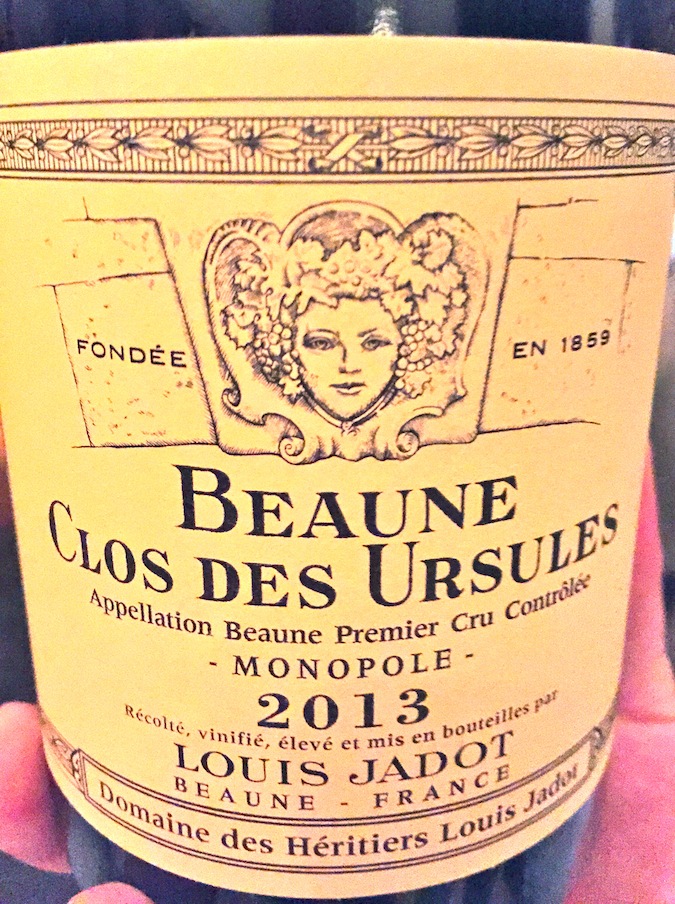
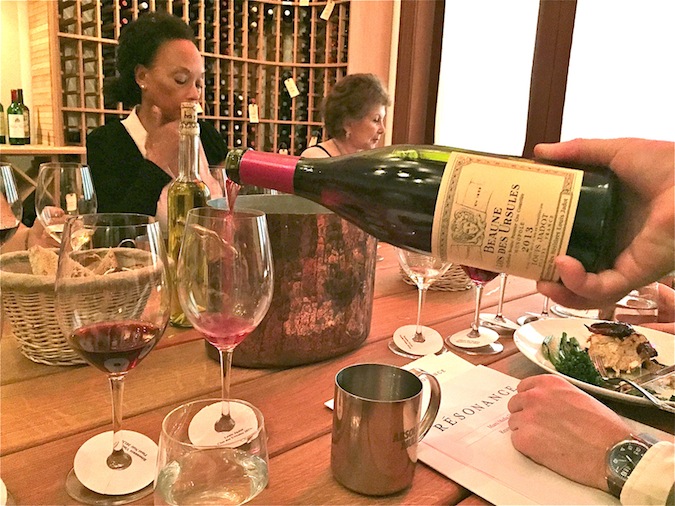
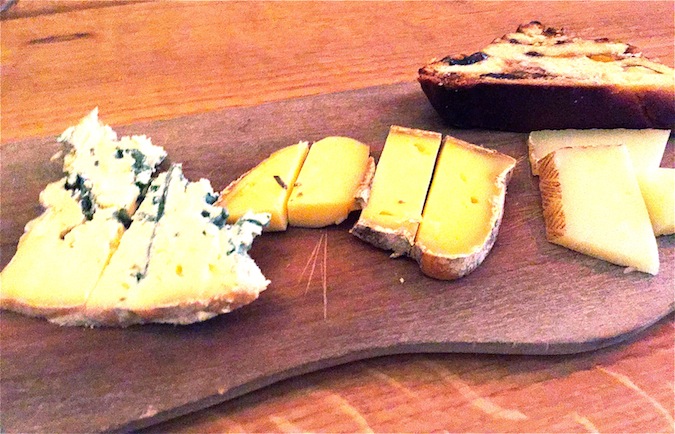 The opportunity to taste the Oregon wines side by side with the Burgundies was a valuable one and revealed that, despite their inherent differences, there was a common stylistic thread throughout these wines. The Résonance Pinots alluded to the restrained elegance of their Burgundian counterparts, yet were generous enough to represent their unique Oregonian terroir. I encourage all Pinot Noir fans to seek out the Résonance wines which should be more widely available later this year (for more information, please e-mail stephanie@theglamorousgourmet.com). Also, if you're planning a trip to Oregon wine country, Résonance's visitor center should be complete by 2018. After all, this busy team is still learning the lay of the land and as Gagey concluded, "The monks have been making wine in Burgundy for over 1,000 years, we are new to Oregon so we have alot to learn and every day we're learning something new, it's very exciting."Cheers,
The opportunity to taste the Oregon wines side by side with the Burgundies was a valuable one and revealed that, despite their inherent differences, there was a common stylistic thread throughout these wines. The Résonance Pinots alluded to the restrained elegance of their Burgundian counterparts, yet were generous enough to represent their unique Oregonian terroir. I encourage all Pinot Noir fans to seek out the Résonance wines which should be more widely available later this year (for more information, please e-mail stephanie@theglamorousgourmet.com). Also, if you're planning a trip to Oregon wine country, Résonance's visitor center should be complete by 2018. After all, this busy team is still learning the lay of the land and as Gagey concluded, "The monks have been making wine in Burgundy for over 1,000 years, we are new to Oregon so we have alot to learn and every day we're learning something new, it's very exciting."Cheers,
